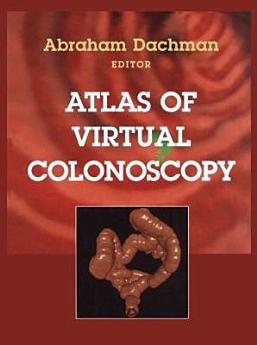Atlas of Virtual Colonoscopy
Acerca de este libro electrónico
Acerca del autor
Abraham H. Dachman, MD, is a nationally known specialist in abdominal imaging. He uses X-rays and advanced imaging equipment to visualize the structure and function of abdominal organs. This information is used to help diagnose disease, to assist in surgical planning, and to determine if treatments are effective. Dr. Dachman is known for his expertise in using computed tomography (CT scans) to create 3-D images of abdominal structures. This 3-D technology gives physicians an additional, valuable tool to better visualize tissue without performing an invasive procedure. He is a leading authority on virtual colonoscopy--using noninvasive CT technology to detect polyps and masses in the colon. In addition, he applies 3-D techniques to aid in the detection and staging of pancreatic cancer, and in the evaluation of tumor response to chemotherapy.
An active researcher, Dr. Dachman has published several journal articles, book chapters, and books, including the first text on virtual colonoscopy, "The Atlas of Virtual Colonoscopy." In addition, he shares his knowledge about this emerging field through courses for radiologists who want to learn how to read virtual colonoscopy studies. He also has given presentations at dozens of scientific meetings around the United States.
Andrea Laghi is Associate Professor in the Department of Radiological, Oncological and Pathological Sciences at the ‘Sapienza’ University of Rome and Director of the CT and MRI Unit at I.C.O.T. University Hospital, Latina, Italy. He currently chairs the Education Committee and is an Executive Committee member of the European Society of Gastrointestinal and Abdominal Radiology (ESGAR), and he is Coordinator of the ESGAR CT Colonography Hands-on Workshops. On behalf of ESGAR he is also member of the Education Committee of the UnitedEuropean Gastrointestinal Federation (UEGF). Professor Laghi is active member of the Associazione Italiana di Radiologia Medica, the European Society of Radiology (ESR) and the Radiological Society of North America (RSNA). He is currently a reviewer for several journals including European Radiology, Radiology, Investigative Radiology, The Lancet and Gastreonterology. Professor Laghi has been invited to present more than 200 lectures and is the author of over 300 published papers.





